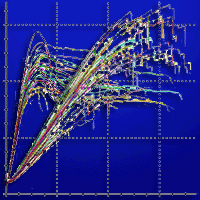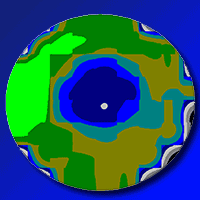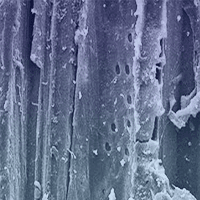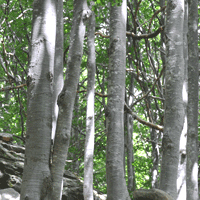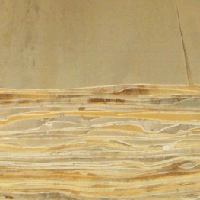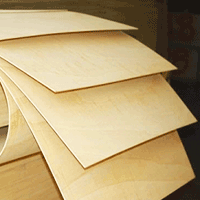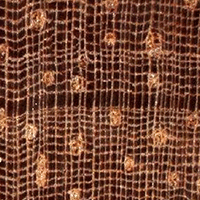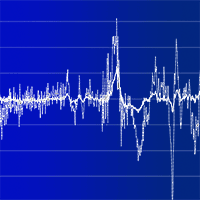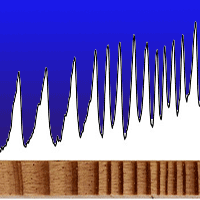
Physical, chemical and mechanical properties of Pinus sylvestris wood at five sites in Portugal
Cláudia Fernandes (1), Maria João Gaspar (1-2-3), Jani Pires (2), Ana Alves (3), Rita Simões (3), José Carlos Rodrigues (3), Maria Emília Silva (4-5), Ana Carvalho (1), José Eduardo Brito (1-2), José Luís Lousada (4-5)
iForest - Biogeosciences and Forestry, Volume 10, Issue 4, Pages 669-679 (2017)
doi: https://doi.org/10.3832/ifor2254-010
Published: Jul 11, 2017 - Copyright © 2017 SISEF
Research Articles
Abstract
The reduction of resinous species in Portuguese forest areas has caused constraints to wood industry supplies. Portugal represents the extreme southwest of Scots pine (Pinus sylvestris) natural distribution and large gaps exist in the knowledge of its wood-quality characteristics. Understanding the relationship between these traits is important for recognizing which combination of wood properties is the most suitable for specific uses. To address these questions, we assessed wood-quality traits, namely, wood-density components (microdensitometric analysis), chemical composition (NIR spectrometry) and mechanical properties (bending tests) of wood samples collected at five representative forest sites in Portugal. Our results showed that Portuguese Pinus sylvestris has good radial growth and denser wood, higher extractive content and higher stiffness and strength than northern European provenances. The lignin content was within the range attributed to softwoods. Among the Portuguese stands, trees growing at lower-altitude sites exhibited denser wood and higher mechanical properties, while trees from high-elevations showed higher amounts of lignin. Ring density was more strongly correlated with earlywood than latewood density. A negative, non-significant correlation was found between ring density and width, supporting the assumption that the higher radial growth (ring width) does not negatively affect wood quality (density). In general, chemical properties had a weak relationship with physical and mechanical properties (MOE and MOR). Both mechanical traits were positively correlated with density and growth components, supporting the assumption that trees with high radial growth do not exhibit poorer mechanical performances.
Keywords
Bending Tests, Correlations, Mechanical Traits, NIR Spectrometry, Scots Pine, Wood-Density Components, Wood Quality, X-ray Microdensitometry
Authors’ Info
Authors’ address
Maria João Gaspar
Ana Carvalho
José Eduardo Brito
BioISI - Biosystems & Integrative Sciences Institute, Faculty of Sciences University of Lisboa, C8 BDG Campo Grande (Portugal)
Jani Pires
José Eduardo Brito
Department of Genetics and Biotechnology (DGB), University of Tras-os-Montes and Alto Douro, 5001-801 Vila Real (Portugal)
Ana Alves
Rita Simões
José Carlos Rodrigues
Centro de Estudos Florestais (CEF), Instituto Superior de Agronomia, Universidade de Lisboa, Tapada da Ajuda, 1349-017 Lisboa (Portugal)
José Luís Lousada
Department of Forestry Sciences and Landscape (CIFAP), University of Tras-os-Montes and Alto Douro, 5001-801 Vila Real (Portugal)
José Luís Lousada
Centre for the Research and Technology of Agro-Environmental and Biological Sciences (CITAB), University of Tras-os-Montes and Alto Douro, 5001-801 Vila Real (Portugal)
Corresponding author
Paper Info
Citation
Fernandes C, Gaspar MJ, Pires J, Alves A, Simões R, Rodrigues JC, Silva ME, Carvalho A, Brito JE, Lousada JL (2017). Physical, chemical and mechanical properties of Pinus sylvestris wood at five sites in Portugal. iForest 10: 669-679. - doi: 10.3832/ifor2254-010
Academic Editor
Giacomo Goli
Paper history
Received: Oct 18, 2016
Accepted: Mar 28, 2017
First online: Jul 11, 2017
Publication Date: Aug 31, 2017
Publication Time: 3.50 months
Copyright Information
© SISEF - The Italian Society of Silviculture and Forest Ecology 2017
Open Access
This article is distributed under the terms of the Creative Commons Attribution-Non Commercial 4.0 International (https://creativecommons.org/licenses/by-nc/4.0/), which permits unrestricted use, distribution, and reproduction in any medium, provided you give appropriate credit to the original author(s) and the source, provide a link to the Creative Commons license, and indicate if changes were made.
Web Metrics
Breakdown by View Type
Article Usage
Total Article Views: 56851
(from publication date up to now)
Breakdown by View Type
HTML Page Views: 46483
Abstract Page Views: 3990
PDF Downloads: 5198
Citation/Reference Downloads: 16
XML Downloads: 1164
Web Metrics
Days since publication: 3062
Overall contacts: 56851
Avg. contacts per week: 129.97
Citation Metrics
Article Citations
Article citations are based on data periodically collected from the Clarivate Web of Science web site
(last update: Mar 2025)
Total number of cites (since 2017): 26
Average cites per year: 2.89
Publication Metrics
by Dimensions ©
Articles citing this article
List of the papers citing this article based on CrossRef Cited-by.
References
Relationships between intra-ring variables in mature Douglas-fir trees from provenance plantations. Wood and Fiber Science 25 (2): 182-191.
Gscholar
Differences of pine (Pinus sylvestris L.) wood physical and mechanical properties from different forest site types in Lithuania. Baltic Forestry 12 (1): 9-13.
Gscholar
Non-destructive evaluation of Scots pine (Pinus sylvestris L.) to determine timber quality following conversion to continuous cover forestry systems. Master of Science Dissertation, University of Edinburgh, Scotland, UK, pp. 62.
Gscholar
Avaliação da interacção genótipo x ambiente nas características de qualidade da madeira de Pinus pinaster [Evaluation of genotype x environment interaction in Pinus pinaster wood quality characteristics]. Master’s dissertation in Forest Engineering, Department of Forestry, University of Tras-os-Montes and Alto Douro, Vila Real, Portugal, pp. 115. [in Portuguese]
Gscholar
Estimating genetic parameters for wood density of Scots pine (Pinus sylvestris L.). Silvae Genetica 55 (2): 84-91.
Gscholar
Wood density, annual ring width and latewood content in larch and Scots pine. Eurasian Journal of Forest Research 8 (2): 91-96.
Gscholar
Effects of recent minimum temperature and water deficit increases on Pinus pinaster radial growth and wood density in southern Portugal. Frontiers in Plant Science 7 (595): 131.
CrossRef | Gscholar
Variação nas componentes da densidade na madeira de Pinus pinaster Ait. [Variation of the density components in Pinus pinaster Ait. wood]. In: “Technical-Scientific Series, Applied sciences no. 12”. UTAD, Vila Real, Portugal, pp. 113. [in Portuguese]
Gscholar
Variação fenotípica e genética em características estruturais na madeira de Pinus pinaster Ait. O comprimento das fibras e a densidade até aos 80 anos de idade das árvores. Parametros genéticos na evolução juvenil - adulto das componentes da densidade da madeira. [Phenotypic and genetic variation in structural features in Pinus pinaster Ait. wood. The fiber length and density to 80 years of tree’s age. Genetic parameters in juvenile-mature evolution of wood density components]. In: “Didactic Applied Sciences Series”, No. 143, UTAD, Vila Real, Portugal, pp. 293. [in Portuguese]
Gscholar
Influencia del azulado (mancha azul) en la densidad y estabilidad dimensional de la madera de Pinus sylvestris [Influence of blue stain on density and dimensional stability of Pinus sylvestris timber]. Maderas Ciencia Y Tecnología 14 (1): 115-125. [in Portuguese]
CrossRef | Gscholar
Determination of lignin content in Norway spruce wood by Fourier transformed near infrared spectroscopy and partial least squares regression. Part 1. Wavenumber selection and evaluation of the selected range. Journal of Near Infrared Spectroscopy 19 (5): 319-329.
CrossRef | Gscholar
Determination of lignin content in Norway spruce wood by Fourier transformed near infrared spectroscopy and partial least squares regression. Part 2. Development and evaluation of the final model. Journal of Near Infrared Spectroscopy 19 (5): 331-341.
CrossRef | Gscholar
Wood density of Scots pine (Pinus sylvestris L.) trees broken by wind. Annals of Warsaw University of Life Sciences - SGGW, Forestry and Wood Technology 76: 144-148.
Gscholar
Wood variation - its causes and control. Springer Series in Wood Science, Springer-Verlag Berlin Heidelberg, Germany, pp. 363.
Gscholar

